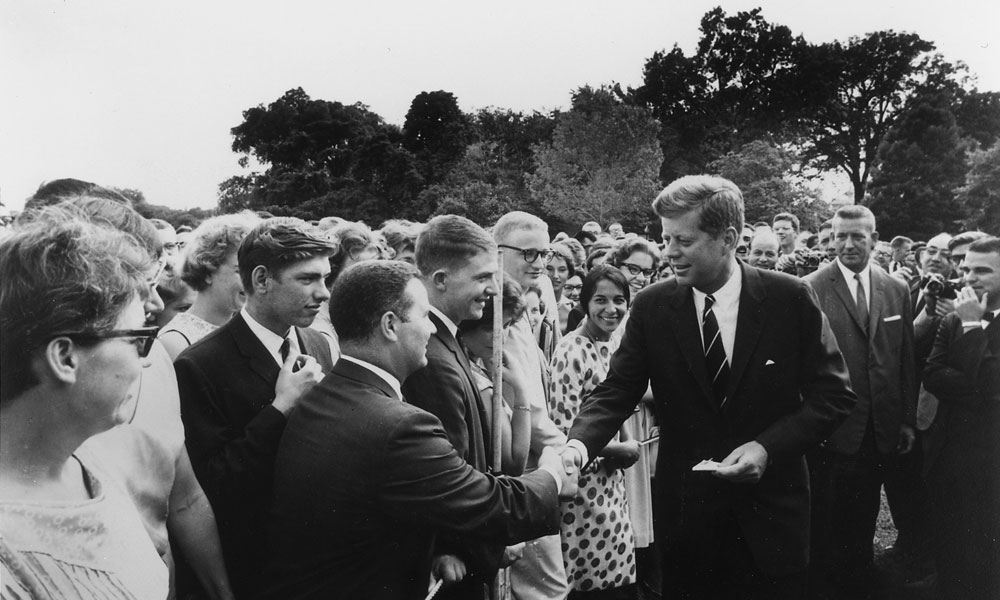
50 Years Later, Associations Carry JFK’s Volunteerism Torch
As the nation pays tribute to the slain 35th president of the United States this week, associations honor his legacy every day by fulfilling his commitment to promote peace through volunteering.
John F. Kennedy was speaking off the cuff in the wee hours of the morning during a 1960 campaign stop when he issued college students a call to serve.
During the improvised speech—at 2 a.m.—at the University of Michigan, just three weeks before he would be elected president, then-Senator Kennedy urged a crowd of 10,000 students to consider the positive impact they could have on the world by using their talents to serve those in need in foreign countries.
A few short months later, President Kennedy would sign Executive Order 10924, establishing the Peace Corps—a government-run program that has since sent more than 200,000 volunteers to 139 countries.
“Life in the Peace Corps will not be easy,” he said upon signing the order (the full statement can be heard below). “But … every young American who participates in the Peace Corps—who works in a foreign land—will know that he or she is sharing in the great common task of bringing to man that decent way of life, which is the foundation of freedom and a condition of peace.”
In the 50 years since his death, associations have continued to carry out Kennedy’s call to serve.
“It’s not hard to look around and see the impact that associations have on our community, and that work is really driven by volunteers,” said Debra BenAvram, CEO of the American Society for Parenteral and Enteral Nutrition. “We as a community have really embraced volunteers as a part of our workforce. Valuing volunteers and volunteering as a part of our organizational culture is a wonderful representation of that legacy.”
Research has shown high rates of volunteer engagement in associations, and mission has a lot to do with that, BenAvram said. “Without volunteerism, we wouldn’t be able to advance our mission. That commitment and that passion around the mission, and then the willingness to contribute to the advancement of the mission, is a really powerful force for associations.”
Although supporting the cause is a consistent motivator for volunteers, she added, associations need to adapt to a changing volunteer landscape.
“We’re understanding the changing needs of volunteers, the changing drivers for volunteering, and the changing paths of volunteer leadership development that are less structured or less hierarchical than we’ve seen in the past,” said BenAvram. “As association professionals, we’re learning to take the conversation about what’s happening and what’s changing and apply that to our practice to create meaningful engagement for members.”
For that success to continue in a world with a variety of generational and cultural changes, many association professionals agree that organizations will need to be more intentional about their approach to volunteering, BenAvram said.
“We’re just going to have to be much more purposeful aligning resources with [volunteering] as a core area,” she said. “It’s something that we’re going to have to not just make an assumption about—it’s part of our DNA, so therefore it is—but it’s a part of our DNA that we must foster and nurture and help grow, or we will lose it.”
JFK shown greeting Peace Corps volunteers in 1962. (National Archives photo)






Comments